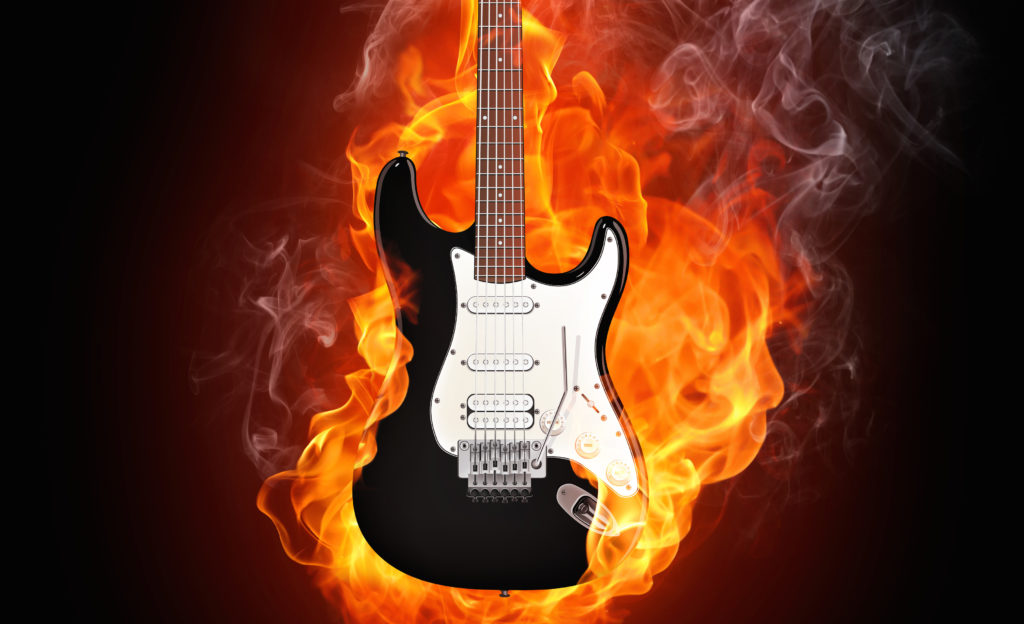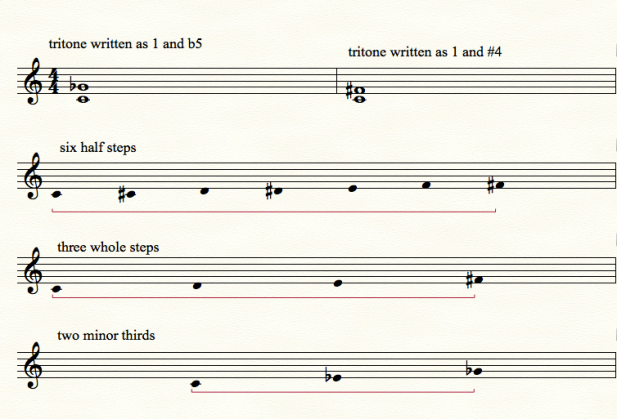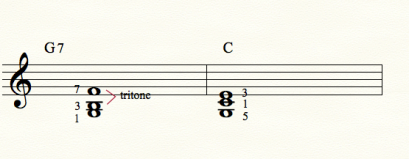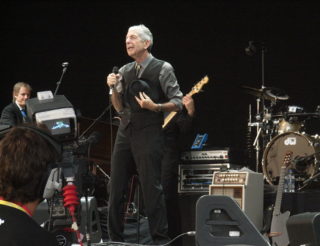The Tritone: Everything You Need to Know
Author: Jonas Schoen-Philbert

Table of Contents
Introduction
Tritone is probably the most famous interval of them all. People have all kinds of associations with this sound, mostly on account of its nickname, “the devil’s interval”. Strangely enough, it appears a lot in jazz music.
Musicians and historians alike reference various names for the tritone:
- Nicknames: the devil’s interval, the chord of evil, or “diabolus in musica,” which is latin for “devil in music”
- Technical Names: Tritonus, the flatted fifth, the augmented fourth, diminished fifth, semidiapente, or semitritonus
What is the Tritone?
The tritone is an interval, meaning two pitches sounding at the same time. So why does it include the prefix “tri” meaning three of something when it consists of only two pitches? The “tri” actually refers to the three whole steps in between the two notes. As a result, this places the tritone between the perfect fourth and the perfect fifth, making it a diminished fifth (with a flat) or an augmented fourth (with a sharp).
Listen to the Tritone Interval In Isolation
Intervals sound different depending on the distance between the two pitches. The reason for this is because each pitch consists itself of many harmonics; higher notes that resonate alongside the “main pitch”. You’ll perhaps be able to best recognize this with church bells, where these notes are very easy to distinguish. Certain intervals have more harmonics in common than others. The more they have in common, the “softer” they sound. There are many words to describe the sounds produced by an interval; dissonant, consonant, disturbing, eerie, and so on. I prefer to give them a degree of hardness because it is a rather neutral and somewhat objective term.
Five Characteristics of The Tritone
- One of the “hardest” sounding intervals we have.
- Consists of two notes six half steps away from each other.
- Lies right between the least hard sounding intervals; the perfect fourth and the perfect fifth.
- Divides the octave in two halves.
- Can be split up in three whole steps and in two minor thirds.

List of Tritones:
Here’s a list of all tritones. The slash indicates two names for the same note depending on if the note is sharp or flat.
- A & D#/Eb
- A#/Bb & E
- B & F
- C & F#/Gb
- C#/Db & G
- D & Ab/G#
The Tritone in Chords
First and foremost, the tritone is an important part of our harmonic system, which consists of three main functions: the tonic, dominant and subdominant. Of these, the dominant is the one which wants to resolve itself the most. If we look at a dominant seventh chord we have the root, the major third, the fifth and the minor seventh. The relation of third and minor seventh is a tritone. [see image below]
To harmonically resolve this, the third moves up a half step to the tonic root and the seventh moves down a half step to the tonic third.

If I go through all of the popular chords, I may find the tritone in the following places:
- In min6 between minor third and major sixth.
- In phrygian chords between b2 and fifth
- In diminished chords between minor third and major sixth, 9 and b13, 4 and major seventh, b5 and root
- In half diminished chords between root and b5 .
- In min b13 between 9 and b13
- In dominant chords based on whole tone/half tone scale between root and #11, b9 and fifth, #9 and 13, third and minor seventh (as described above).

The Tritone’s Diabolical History
The tritone has appeared in Western music for hundreds of years. Indeed, for its dark and often unsettling sound it was once called the ‘devil’s interval’ and was supposedly banned by churches in the Middle Ages, opting for more harmonious sounds. Over time, the tritone has become more prominent in American blues and jazz and is often referred to as one of the blue notes.
The tritone itself is not very easy to sing. Important to mention here are melodies in blues music. The so-called “blue note” is a lowered-fifth and a tritone with the root note. CD Bandorf, a great pianist and fellow teacher at the HDPK (“Hochschule der populären Künste” in Berlin) recently showed me his great concept for a blues melody. He considers the confining of bluesy melodies to the use of the blues scale as one of the bigger sins in jazz and pop education.
There are too many incredibly bluesy notes that lie outside of the blues scale; chiefly the major third and the major sixth. If we’d incorporate them into blues melodicism we’d have the above mentioned tritone between major third and minor seventh, a tritone between minor third and major sixth and the blue note, b5, which is a tritone with the root. Each of these tritones is very expressive in their own bluesy ways.
25 Songs Featuring The Tritone
Usage of the tritone today comes with a certain stigma, one that can be described as ballsy, rebellious and downright creepy. The tritone can be found in many places, but where so prominently that we can pick it out? Behold! Uberchord’s list of 25 songs featuring the tritone. The page might take a little time to load because we included YouTube links for each song so that you can point out exactly where it appears.
If you found this post interesting you should also read our Music Theory Series Made Easy that starts out with the Major Scale, Intervals and Chords.









The longer I involve myself with music on the guitar, the greater, the knowledge I must learn. To know that there is a simplified system of music for each instrument, for each style, for each player.
These are the elements of music that I always felt was important to consider by teachers. The formal education in music was not difficult to learn. It was the harshness of the teachers in the rudiments of the forum of music that was somehow cruel and not enriching at all. That I have studied music for the last 4 decades has meant that I had to relearn and relearn the elements of basics. This was a terrible waste to have rendered upon an earnest heart. I understand that music is not so easy as to be for the majority of those who tend public school, but it is for those whom, by the very nature of their desire want to play.
I am in anticipation that this site may offer me yet a better and more opportunistic site to continue my development though I am much older and not in it except to play and what ever reward that may be gotten from my hearts desire to play
Hello James, I’m studying jazz at age 79, and totally agree with you that so much was missed out in my formal training whereby I obtained ATCL. I found your site looking up the ‘Tritone’ and find it fascinating. How to apply it is next.
Jonas should know that the most angry Black Panther-driven Hiphop isn’t music.
The Theory of Musical Equilibration states that in contrast to previous hypotheses, music does not directly describe emotions: instead, it evokes processes of will which the listener identifies with. A major chord is something we generally identify with the message, “I want to!”. The experience of listening to a minor chord can be compared to the message conveyed when someone says, “No more.” If someone were to say the words “no more” slowly and quietly, they would create the impression of being sad, whereas if they were to scream it quickly and loudly, they would be come across as furious. This distinction also applies for the emotional character of a minor chord: if a minor harmony is repeated faster and at greater volume, its sad nature appears to have suddenly turned into fury.
The Theory of Musical Equilibration applies this principle as it constructs a system which outlines and explains the emotional nature of musical harmonies, for example why a diminished chord is well-suited as the score for film scenes involving fear, or how an augmented chord can convey amazement and astonishment. You can get more information on the link Journal of Psychology & Psychotherapy or on the link Music and Emotions .
Bernd Willimek, musictheorist
buenos dias, idealistic blog on suety loss. such a thing helped.